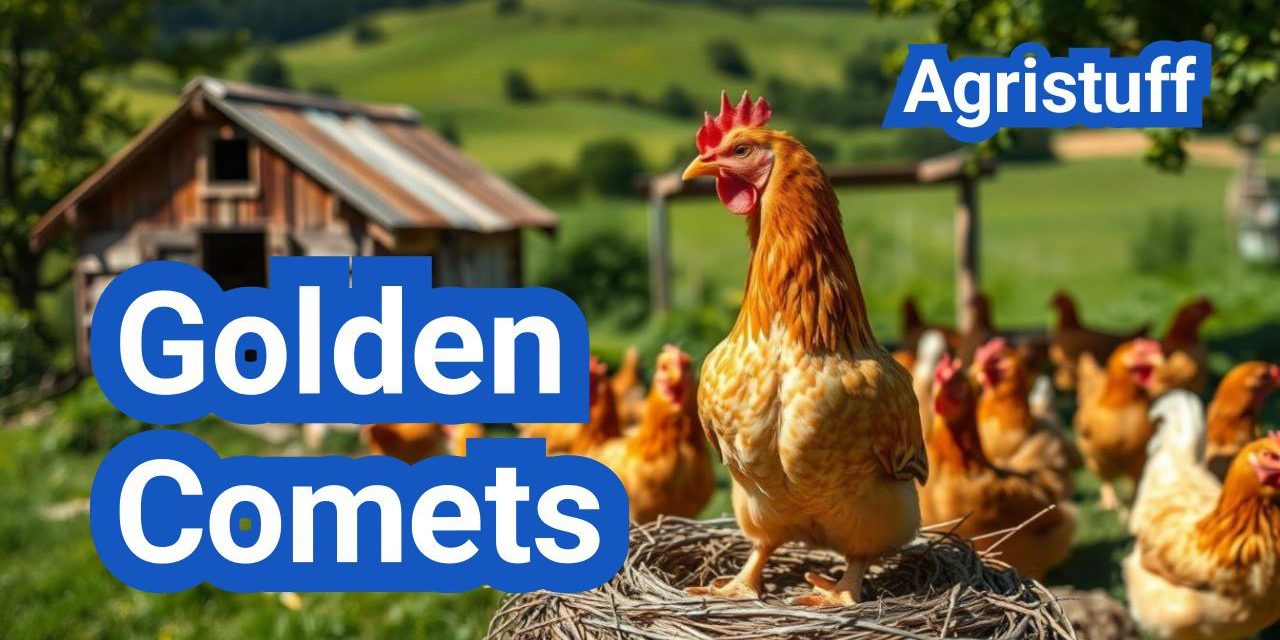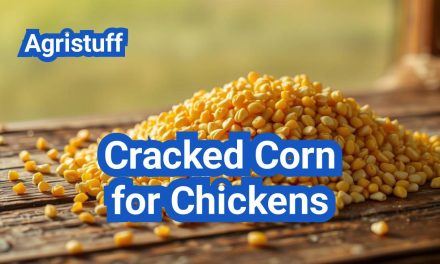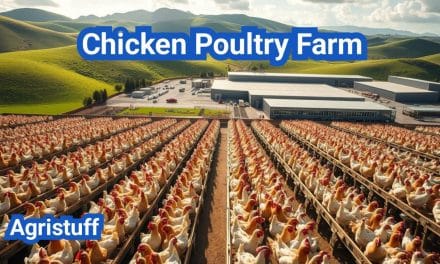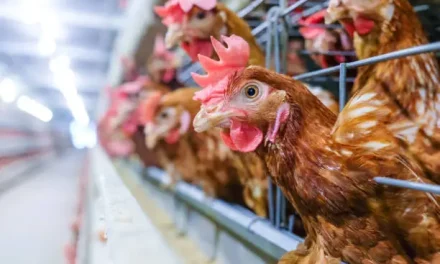For backyard farmers, Golden Comets Chicken are an excellent choice due to their high egg production and friendly nature. These chickens are known for their ability to thrive in various environments, making them a popular choice among backyard farmers.
The Golden Comet chicken breed is particularly valued for its prolific egg-laying capabilities, producing a significant number of eggs annually. Their temperament is also a significant advantage, as they are generally docile and easy to manage.
Key Takeaways
- Golden Comets Chicken are ideal for backyard farms due to their high egg production.
- They are known for their friendly and docile nature.
- The breed is prolific in egg-laying, making them a valuable addition to any backyard farm.
- Golden Comets Chicken are adaptable to various environments.
- They are a popular choice among backyard farmers for their egg production and temperament.
What Are Golden Comets Chickens?
Golden Comets Chicken are a cross between Rhode Island Red roosters and White Rock hens, bred specifically for their egg-laying capabilities. This hybrid breed is known for its sex-link characteristics, which allow for easy differentiation between males and females from a young age.
Origin and Development History
The Golden Comets Chicken is a result of careful breeding programs aimed at creating a prolific egg-layer with desirable traits from both parent breeds. The Rhode Island Red is renowned for its rich, dark red plumage and high egg production, while the White Rock contributes to the hardiness and friendly disposition of the offspring.
Understanding Sex-Link Hybrid Chickens
Sex-link chickens, like Golden Comets, are hybrid chickens created by crossing two different breeds to produce offspring with specific characteristics. The sex-link trait allows breeders to determine the sex of chicks at hatching based on their color or feathering, making it a valuable trait for commercial and backyard poultry keepers.
Golden Comets Chicken are considered a first-generation hybrid, meaning they exhibit hybrid vigor, resulting in robust health and high productivity. This characteristic makes them particularly appealing to backyard farmers looking for a reliable and efficient chicken breed for egg production.
Physical Characteristics of Golden Comets
Golden Comets Chicken are medium-sized chickens with several notable physical characteristics. They are a popular choice among backyard farmers due to their friendly demeanor and attractive appearance.
Appearance and Size
Golden Comets Chicken typically have a reddish-gold plumage, which gives them their name. Hens usually weigh between 4-5 pounds, while roosters are slightly larger. Their medium size makes them a manageable addition to most backyard flocks.
Distinguishing Features
One of the distinguishing features of Golden Comets is their sex-link hybrid vigor, which contributes to their robust health and high egg production. They have a compact, well-feathered body, which helps them withstand various weather conditions.
Distinguishing Between Hens and Roosters
Distinguishing between hens and roosters in Golden Comets can be done by observing their physical characteristics. Roosters tend to be larger and have more vibrant plumage compared to hens. Additionally, roosters develop more pronounced comb and wattles as they mature.
The Impressive Egg Production of Golden Comets

Golden Comets Chicken are renowned for their exceptional egg-laying abilities, making them a favorite among backyard farmers. Their egg production is one of the key reasons they are widely kept for personal egg supply.
Average Eggs Per Year
On average, Golden Comets lay between 250 to 320 large to extra-large brown eggs per year. This prolific production makes them an excellent choice for those seeking a consistent egg supply. As noted by experts, “Golden Comets are among the top egg-producing breeds, offering a reliable source of fresh eggs.”
Egg Color and Size
The eggs laid by Golden Comets are typically brown in color and range from large to extra-large in size. The consistent brown coloration is a desirable trait for many backyard farmers, as it provides a uniform appearance to the eggs collected.
A notable characteristic of Golden Comets is their ability to maintain a consistent egg size throughout their laying cycle.
Production Timeline and Peak Laying Periods
Golden Comets Chicken begin laying eggs at around 16-18 weeks of age and reach their peak production within the first year. Their egg production peaks in the first two years, after which it gradually declines. As stated in a poultry farming guide, “Most hens, including Golden Comets, will produce eggs at their highest rate during the first two years of laying.”
Understanding the production timeline is crucial for managing expectations and optimizing the care provided to these hens.
Golden Comet Chicken Temperament
Golden Comets chickens are renowned for their exceptional temperament, making them a favorite among backyard farmers. Their friendly and docile nature is a significant factor in their popularity.
Personality Traits
Golden Comets Chicken are known for being friendly and easy-going. They are not typically aggressive and are often described as having a calm demeanor. This makes them an excellent choice for families with children or for those who are new to raising chickens.
- They are generally quiet and not prone to loud noises.
- Their docile nature makes them easy to handle.
- They tend to be curious and enjoy exploring their surroundings.
Interaction with Humans
One of the standout features of Golden Comets is their interaction with humans. They are known to be quite affectionate and enjoy human company. Many owners report that their Golden Comets will follow them around the yard and even come when called.
This friendly disposition makes them a joy to be around and can lead to a strong bond between the chicken and the owner.
Compatibility with Other Chicken Breeds
Golden Comets Chicken generally get along well with other chicken breeds, making them a great addition to mixed flocks. Their calm nature helps to reduce conflicts within the flock.
When introducing Golden Comets to other breeds, it’s essential to follow proper introduction techniques to ensure a smooth transition.
Lifespan and Health Considerations

Understanding the lifespan and health considerations of Golden Comets chickens is crucial for anyone looking to start or maintain a thriving backyard flock. Golden Comets are a popular choice among backyard chicken keepers due to their high egg production and friendly nature.
Average Lifespan of Golden Comets
The average lifespan of Golden Comets chickens is typically between 3 to 5 years. This relatively short lifespan is largely due to their high rate of egg production, which can be stressful on their bodies.
Common Health Issues
Golden Comets Chicken are prone to certain health issues, primarily related to their high egg production. These can include reproductive tract problems and metabolic disorders such as egg yolk peritonitis. Regular health checks and a balanced diet can help mitigate these risks.
Factors Affecting Longevity
Several factors can affect the longevity of Golden Comets, including nutrition, living conditions, and health care. Providing a balanced diet, ensuring access to clean water, and maintaining a clean and safe living environment are crucial for maximizing their lifespan. Additionally, regular veterinary check-ups can help identify and address health issues early on.
Setting Up Housing for Golden Comets
Creating a comfortable and secure home for your Golden Comets is crucial for their health and productivity. Golden Comets require a well-designed coop and run to protect them from predators and provide a healthy environment.
Coop Size and Design Requirements
The coop should be spacious enough to accommodate your Golden Comets comfortably. A general rule of thumb is to provide at least 3-4 square feet per chicken inside the coop. Adequate ventilation is also crucial to prevent ammonia buildup from the chickens’ droppings.
The coop design should include features such as:
- Easy cleaning access
- Predator-proofing
- Adequate roosting bars
Nesting Box Specifications
Nesting boxes are a critical component of the coop, providing a safe place for hens to lay their eggs. One nesting box per 3-4 hens is a good rule to follow. The boxes should be:
- Comfortably sized (about 12x12x12 inches)
- Placed in a quiet, dark area
- Filled with soft bedding material
Run Space Considerations
The run allows your Golden Comets to exercise and engage in natural behaviors. A minimum of 8-10 square feet per chicken is recommended for the run. The run should be covered to prevent escape and predation.
| Housing Component | Specification |
|---|---|
| Coop Size | 3-4 sq ft/chicken |
| Nesting Boxes | 1 box/3-4 hens |
| Run Space | 8-10 sq ft/chicken |
By following these guidelines, you can create a safe and healthy housing system for your Golden Comets, ensuring their well-being and productivity.
Feeding Your Golden Comet Chickens Properly

Proper nutrition is crucial for the health and productivity of Golden Comet chickens. These birds are known for their high egg production, and a well-balanced diet is essential to support this productivity.
Golden Comets Chicken require a diet rich in protein to maintain their egg-laying capabilities. A layer feed with 16-18% protein is recommended. This high protein content supports the hens’ nutritional needs, ensuring they remain healthy and productive.
Nutritional Requirements
The nutritional requirements of Golden Comets include a balanced mix of proteins, carbohydrates, vitamins, and minerals. A good quality layer feed should provide all the necessary nutrients. It’s also important to ensure access to fresh water at all times.
A balanced diet for Golden Comets should include:
- 16-18% protein
- Calcium for strong eggshell production
- Vitamins and minerals for overall health
Feed Conversion Ratio Benefits
The feed conversion ratio (FCR) is a measure of how efficiently chickens convert feed into eggs. Golden Comets are known for their favorable FCR, meaning they can produce a significant number of eggs relative to the amount of feed they consume. A good FCR indicates that the chickens are healthy and that their nutritional needs are being met.
| Breed | Feed Conversion Ratio | Eggs Per Year |
|---|---|---|
| Golden Comets | 2.0-2.5 | 280-300 |
| ISA Browns | 2.0-2.2 | 300-320 |
Supplements and Treats
While a balanced layer feed should provide all the necessary nutrients, supplements and treats can be given in moderation. Calcium supplements, such as crushed oyster shells, can support eggshell production. Treats like fruits and vegetables can be given in limited amounts to provide variety and enrichment.
It’s essential to avoid over-supplementation, as this can lead to nutritional imbalances. Treats should not exceed 10% of the chickens’ daily calorie intake.
Caring for Golden Comets Through Different Seasons

As the seasons change, caring for Golden Comets requires adjustments to keep them healthy and productive. Golden Comets are known for their hardiness, but extreme weather conditions can still impact their well-being and egg production.
Cold Weather Management for These Hardy Hens
Golden Comets Chicken are cold-hardy chickens, but they still need protection from harsh winter conditions. Ensuring their coop is well-insulated and draft-free is crucial. Providing adequate ventilation to prevent moisture buildup is also important, as it helps prevent respiratory issues. In extremely cold temperatures, offering warm water and extra nutrition can help maintain their health and egg production.
Hot Weather Care Strategies
During hot weather, it’s essential to keep Golden Comets cool and hydrated. Providing shade, ensuring good ventilation in the coop, and offering cool water are vital. You can also use cooling measures such as misting systems or fans to reduce heat stress. Monitoring their health and adjusting their feeding schedule to avoid heat stress during the hottest parts of the day is also beneficial.
Seasonal Egg Production Variations
Egg production in Golden Comets varies with the seasons. Generally, they produce more eggs in the spring and summer when daylight hours are longer. In contrast, egg production decreases during the fall and winter due to shorter daylight hours and colder temperatures. Understanding these seasonal variations can help you manage your expectations and make necessary adjustments to their care.
| Season | Egg Production | Care Requirements |
|---|---|---|
| Spring/Summer | High | Ensure adequate nutrition, provide shade and ventilation |
| Fall/Winter | Low | Provide warm water, extra nutrition, and a draft-free coop |
Starting Your Flock of Golden Comets

If you’re considering adding Golden Comets to your backyard farm, here’s a step-by-step guide to get you started. Starting a flock of these excellent layers requires some planning and knowledge, but with the right information, you’ll be well on your way to enjoying fresh eggs from your very own backyard.
Where to Purchase Golden Comet Chicks
The first step in starting your Golden Comet flock is acquiring chicks from a reputable source. You can purchase Golden Comet chicks from well-known hatcheries or local feed stores that specialize in poultry. Ensure that the chicks are healthy and have been properly vaccinated. It’s also a good idea to check reviews or ask for recommendations from other backyard chicken keepers to find a trustworthy supplier.
Brooding Golden Comet Chicks
Once you have your chicks, you’ll need to set up a brooder. The brooder should be warm, draft-free, and equipped with adequate lighting. For the first few weeks, maintain a temperature of around 90-95°F, gradually decreasing it as the chicks grow. Provide plenty of fresh water and starter feed that’s specifically formulated for young chicks. Monitor the chicks’ health and behavior closely during this critical period.
Week-by-Week Development Guide
Golden Comet chicks develop rapidly. Here’s a brief overview of what to expect:
- Week 1-2: Chicks will be mostly sleeping and eating. Ensure the brooder is clean and warm.
- Week 3-4: Chicks start to feather out and become more active.
- Week 5-6: Chicks are nearly fully feathered and can be moved to a coop or larger enclosure.
By following these guidelines, you’ll be able to raise healthy Golden Comets that will provide you with a bountiful supply of eggs.
Golden Comets vs. Other Productive Layers

Golden Comets Chicken are a favorite among backyard farmers, but how do they stack up against other prolific layers like ISA Browns and Red Stars? When deciding on the best breed for your backyard farm, it’s crucial to consider factors such as egg production, temperament, and overall hardiness.
Golden Comets vs. ISA Browns
ISA Browns are known for their exceptional egg-laying abilities, producing around 300-320 large brown eggs per year. Golden Comets, while also prolific layers, produce slightly fewer eggs, around 280-300 per year. However, Golden Comets are often praised for their friendly disposition and adaptability to various climates.
In terms of temperament, both breeds are generally docile, but Golden Comets are often considered more sociable and easier to handle, making them a great choice for families.
Golden Comets vs. Red Stars
Red Stars are another popular choice for backyard farmers due to their high egg production and robust health. Similar to Golden Comets, Red Stars lay around 280-300 brown eggs annually. One key difference lies in their appearance; Red Stars have a deeper red feathering compared to the Golden Comet’s golden-brown plumage.
Both breeds are known for their hardiness and ability to thrive in various conditions, but Golden Comets are often noted for their slightly more docile nature.
Golden Comets vs. Cinnamon Queens
Cinnamon Queens are prized for their cinnamon-colored eggs and friendly personalities. While they lay around 280 eggs per year, similar to Golden Comets, their egg color can be a unique addition to any egg basket. Cinnamon Queens and Golden Comets share similar temperaments, being friendly and easy to manage.
Ultimately, the choice between Golden Comets and other productive layer breeds depends on your specific needs and preferences. Whether you prioritize egg production, temperament, or unique characteristics, understanding the differences between these breeds can help you make an informed decision.
Benefits of Raising Golden Comets for Backyard Farmers

For backyard farmers seeking a low-maintenance and productive layer, Golden Comets are an ideal breed. Their unique combination of characteristics makes them highly beneficial for those looking to start or expand their backyard flock.
Low Maintenance Advantages
Golden Comets Chicken are known for their hardiness and adaptability, making them a low-maintenance addition to any backyard farm. They are resistant to many common chicken health issues, reducing the need for frequent veterinary visits. Additionally, their friendly and docile nature makes them easy to handle and care for.
Early Maturity and Production Benefits
One of the significant advantages of Golden Comets is their early maturity. They begin laying eggs at around 16-18 weeks of age, providing a quick return on investment for backyard farmers. Their high egg production rate, averaging around 200-220 large brown eggs per year, makes them an excellent choice for those looking to produce eggs for personal consumption or sale.
Economic Advantages
The economic benefits of raising Golden Comets are substantial. Their high egg production rate, combined with their low maintenance requirements, makes them a cost-effective choice for backyard farmers. To illustrate the economic advantages, consider the following comparison:
| Breed | Average Eggs Per Year | Feed Cost Per Year | Economic Benefit |
|---|---|---|---|
| Golden Comets | 200-220 | $15-$20 | High |
| Other Breeds | 150-180 | $20-$25 | Moderate |
In conclusion, the benefits of raising Golden Comets for backyard farmers are multifaceted, including their low maintenance requirements, early maturity, and economic advantages. By incorporating Golden Comets into their flock, backyard farmers can enjoy a sustainable and productive egg production system.
Common Challenges with Golden Comet Chickens

While Golden Comets are generally hardy and productive, they can face certain issues that affect their performance. One of the primary concerns for backyard farmers is managing the decline in egg production over time.
Managing Production Decline
Golden Comets Chicken are known for their high egg production in the first year, but this tends to decrease in subsequent years. To manage this decline, farmers can focus on providing optimal nutrition and ensuring the chickens’ overall health is maintained through regular health checks.
Addressing Behavioral Issues
Behavioral issues such as feather pecking or aggression can arise, especially in confined spaces. Ensuring adequate space in the coop and run, providing enrichment activities, and monitoring the flock’s dynamics can help mitigate these problems.
Preventing Health Problems
Preventing health issues is crucial for maintaining a productive flock. Regular checks for parasites, vaccinations when necessary, and maintaining cleanliness in the coop are essential practices.
By understanding and addressing these common challenges, backyard farmers can better care for their Golden Comet chickens and enjoy a healthy and productive flock.
Breeding Considerations for Golden Comets

The process of breeding Golden Comets is complex and involves understanding their hybrid vigor limitations. Golden Comets are a cross between a Rhode Island Red rooster and a White Leghorn hen, making them a sex-linked hybrid breed. This hybridization results in vigorous offspring, but it also means that breeding them can be challenging.
Understanding Hybrid Vigor Limitations
Hybrid vigor refers to the phenomenon where the offspring of two different breeds exhibit superior qualities compared to their parents. However, this vigor is not passed on to the next generation when hybrid birds are bred. This limitation is crucial to understand when considering breeding Golden Comets.
Why Breeding Golden Comets Is Problematic
Breeding Golden Comets is problematic because the offspring do not retain the same level of productivity or vigor as the parent generation. This is due to the genetic diversity lost in subsequent generations of hybrid birds. As a result, backyard farmers often need to purchase new chicks or pullets regularly to maintain their flock’s productivity.
Alternative Breeding Strategies
For those determined to breed their Golden Comets, alternative strategies can be considered. One approach is to maintain a diverse flock with multiple breeds, allowing for a broader genetic pool. However, this requires careful planning and management to ensure the health and productivity of the flock.
| Breeding Strategy | Advantages | Disadvantages |
|---|---|---|
| Maintaining Pure Breeds | Predictable traits, genetic diversity | May lack hybrid vigor |
| Cross-Breeding | Hybrid vigor, improved productivity | Offspring may not retain traits |
In conclusion, while breeding Golden Comets presents several challenges, understanding these limitations and exploring alternative breeding strategies can help backyard farmers make informed decisions about their flock.
Integrating Golden Comets into a Mixed Flock
Golden Comets Chicken can be a valuable addition to a mixed flock, but introduction techniques are crucial to ensure a harmonious and productive flock.
Introduction Techniques
When introducing Golden Comets Chicken to a mixed flock, it’s essential to do so gradually. Start by keeping the new birds in a separate area, allowing them to become familiar with each other’s sounds and smells. Once they seem comfortable, you can begin visual introductions under close supervision.
Establishing Pecking Order
Establishing a pecking order is a natural process in any flock. To minimize stress, ensure there are enough feeding and watering stations for all birds. Providing multiple perches and hiding spots can also help reduce conflicts as the birds establish their hierarchy.
Managing Different Breed Requirements
Different breeds have varying needs, so it’s crucial to assess whether your existing flock’s requirements align with those of Golden Comets. For instance, Golden Comets are known for their cold hardiness, so if your flock includes breeds that are more sensitive to cold, you’ll need to ensure adequate shelter and protection are provided.
Sustainable Practices with Golden Comets Chicken
Sustainable backyard farming with Golden Comets involves several eco-friendly practices that benefit both the chickens and the farm. By adopting these methods, you can create a more balanced and productive farming environment.
Composting and Garden Integration
Golden Comets chickens contribute to sustainable farming through their droppings, which can be composted and used as fertilizer for your garden. This process not only reduces waste but also creates a nutrient-rich soil amendment. To implement this, collect chicken droppings and bedding material, compost them, and then use the compost to fertilize your garden.
Natural Pest Control Benefits
Golden Comets Chicken are effective at controlling pests naturally. They forage for insects and bugs, reducing the need for chemical pest control methods. This natural pest control benefits your garden by minimizing damage from pests and reducing the environmental impact of chemical pesticides.
Reducing Feed Costs Through Foraging
Allowing Golden Comets Chicken to forage can significantly reduce feed costs. By providing a suitable foraging area, you enable your chickens to feed on grasses, insects, and other natural food sources, supplementing their diet and lowering overall feed expenses.
| Sustainable Practice | Benefits |
|---|---|
| Composting | Reduces waste, creates nutrient-rich fertilizer |
| Natural Pest Control | Reduces chemical use, protects garden |
| Foraging | Lowers feed costs, promotes natural behavior |
Why Golden Comets Make Excellent Backyard Chickens
Golden Comets chicken have proven to be an excellent choice for backyard farmers seeking a productive and friendly flock. Their impressive egg-laying abilities, combined with their docile nature, make them an ideal breed for those new to backyard farming.
The friendly temperament of Golden Comets allows them to integrate well into mixed flocks, and their relatively low-maintenance requirements make them suitable for a variety of backyard setups. With proper care and management, Golden Comets can provide a steady supply of eggs for years to come.
In conclusion, Golden Comets chicken are a great option for anyone looking to start or expand their backyard flock. Their numerous benefits, including high egg production and friendly disposition, make them an excellent choice for backyard farmers in the United States.
FAQ
What are Golden Comet chickens?
Golden Comet chickens are a hybrid breed known for their high egg production and friendly temperament. They are a cross between a Rhode Island Red rooster and a White Leghorn or a similar breed hen, making them a sex-link chicken.
What color eggs do Golden Comet chickens lay?
Golden Comet chickens lay brown eggs, with the shade varying from light to dark brown. The exact color can depend on the individual hen and her lineage.
How many eggs can I expect from a Golden Comet hen per year?
Golden Comet hens are prolific layers, producing an average of 200 to 250 large brown eggs per year. Their egg production is one of the reasons they are popular among backyard farmers.
Are Golden Comet chickens friendly?
Yes, Golden Comet chickens are known for their friendly and docile nature. They are generally easy to handle and interact well with humans, making them a great choice for families.
What is the average lifespan of a Golden Comet chicken?
The average lifespan of a Golden Comet chicken is about 5 to 7 years. However, with proper care and management, some Golden Comets have been known to live longer.
Are Golden Comets cold hardy?
Yes, Golden Comet chickens are considered cold hardy. They can tolerate cooler temperatures, but they still require proper shelter and care to stay healthy during harsh winters.
How do I care for Golden Comet chickens during hot weather?
To care for Golden Comets Chicken during hot weather, ensure they have access to plenty of shade, cool water, and a well-ventilated coop. You can also provide them with cooling treats and ensure their run is shaded.
Can I breed Golden Comet chickens?
Breeding Golden Comet chickens is not recommended because they are a hybrid breed. Their offspring will not retain the same characteristics as the parent generation, making breeding them less predictable.
How do Golden Comets compare to ISA Browns?
Golden Comets and ISA Browns are both high-production layer breeds. While both are prolific layers, ISA Browns are known for their slightly higher egg production. Golden Comets, however, are often praised for their friendly disposition.
What are the benefits of raising Golden Comets?
The benefits of raising Golden Comets include their high egg production, friendly temperament, and relatively low maintenance care. They are an excellent choice for backyard farmers looking for a productive and pleasant flock.
How can I integrate Golden Comets into a mixed flock?
To integrate Golden Comets into a mixed flock, introduce them gradually, allowing the chickens to get used to each other’s presence. Start by keeping them in separate areas but allowing them to see each other, then gradually integrate them under close supervision.
What are some sustainable practices I can implement with Golden Comets?
Sustainable practices with Golden Comets include composting their manure, using natural pest control methods, and allowing them to forage for some of their food. These practices can help reduce waste and lower feed costs.
Conclusion of: Golden Comets Chicken
Golden Comets Chicken are among the most popular and prolific brown‑egg layers available for small‑scale and backyard flocks in the USA today, capturing attention from homesteaders, hobby keepers, and family farms alike. Golden Comets Chicken begin laying as early as 16 weeks, and during their first two years, they often produce between 280 and 330 large brown eggs annually — a level of productivity that outpaces many heritage breeds.¹² These sex‑link hybrids—sometimes sold as Red Star, Cinnamon Queen, or Gold Sex‑Link—deliver early pullets ready for high egg output, with very predictable sexed chicks and a calm, friendly temperament that makes them ideal for beginners.¹³ The combination of fast maturity, excellent feed‑to‑egg conversion and ease of care means Golden Comets Chicken consistently rank among the top layer options in the USA.¹¹ As a content writer focused on SEO and helpful agricultural advice, this article explains why Golden Comets Chicken make an outstanding choice for backyard farms.
For more on hybrid chicken benefits, see the University of Maine Extension’s guide on Golden Comets.
Origins and Genetics
Golden Comets Chicken are not a standardized breed but a deliberate hybrid cross—usually of a White Plymouth Rock (or White Rock/Rhode Island White) hen with a New Hampshire Red rooster.¹³ These sex‑link crosses make it simple for hatcheries to sell chicks already sexed by the down color (red‑striped for pullets, yellow/white for cockerels), which simplifies flock planning.¹⁴ In commercial production, this predictable sexing, combined with the genetic vigor imparted by the line crossing, has made Golden Comets Chicken one of the most widely kept hybrids in American egg farms.¹¹ Though they share ancestry with Rhode Island Reds and White Rocks, Golden Comets Chicken mature earlier, lay more prolifically, and consistently deliver quality large brown eggs—exactly what backyard egg keepers want.
Learn about sex-linked genetics from Penn State’s poultry science research.
Egg Production Performance
Golden Comets Chicken are bred to lay — typically achieving 6 eggs per week (over 300 per year) in their first 18–24 months.¹¹⁶ As part of this, they start laying early (approximately 16–20 weeks of age), with pullets often producing medium‑to‑large eggs by week 20.¹⁶ Their efficient feed conversion—requiring about 2 lbs of layer feed to produce 1 lb of eggs—is one reason they remain cost‑effective.¹¹¹ A flock of well‑managed Golden Comets Chicken in a small flock can rival or even outperform larger, slower dual‑purpose breeds, giving near daily eggs in the prime egg‑laying window.¹² Even though production slows the third year, the upfront yield during the first two seasons is enough to justify frequent flock turnover for high‑production goals.
For egg-laying benchmarks, refer to Backyard Poultry’s breed profile.
Temperament and Household Fit
Golden Comets Chicken are known for their gentle, calm and curious disposition—traits that help them integrate well into families, educational projects (like 4‑H), or even urban settings where noise must be minimal.¹³⁶ They are typically even‑keeled—hen‑pecking conflicts are rare, and they generally accept human handling without fuss. Metal tags, breed guides, and backyard keepers alike highlight that Golden Comets Chicken rarely become aggressive and seldom go broody, which helps keep them laying steadily rather than sitting on nests.¹³ Their consistency and docility make Golden Comets Chicken a favorite for multi‑breed coops where harmony is important.
Explore temperament insights from The Happy Chicken Coop.
Housing, Nutrition, and Feed Efficiency
Golden Comets Chicken adapt well to both confined coops with runs and free‑range setups, though they thrive when given some foraging space.¹³ A coop that offers 3–4 sq ft per bird, plenty of nesting boxes, and roosting areas helps keep them comfortable. Layer diets of 16–18 % protein with calcium supplementation (e.g. oyster shell grit) are ideal to support their frequent egg production.¹⁸ Due to their smaller body size relative to heritage breeds, Golden Comets Chicken need less feed per egg, making the flock economical even on limited acreage.¹¹¹ Backyard keepers often see feed conversion benefit as fewer feed bags and fewer feed costs over the first two years.
USDA guidelines on poultry housing are available here.
Common Health Considerations
Golden Comets Chicken, like many high‑yield sex‑link layers, face some health trade‑offs: their high production strain puts them at increased risk for reproductive issues such as egg binding, oviduct peritonitis or ovarian tumors, especially after year three.¹⁰⁴ Also, their single combs and upright wattles, while normal, may be more prone to frostbite in very cold climates unless comb covering or insulation is provided.¹¹ Comparatively, their lifespan averages around 4–5 years, shorter than heritage breeds, though proper nutrition and avoiding continuous artificial light (which can hasten reproductive wear) help moderate those risks.¹¹¹
The AVMA’s poultry health resources offer preventive care tips.
Managing Seasonality and Lighting
While many backyard keepers assume Golden Comets Chicken slow down in winter, these hybrids respond well to consistent photoperiods—needing around 12–14 hours of light daily to maintain peak egg production.¹⁷ Adding controlled coop lighting in winter (mornings are better than evenings) helps offset natural day‑length decline and keeps egg flow steady.¹⁷ Supplemented lighting doesn’t age the birds faster—aging is more related to natural hormonal decline—but it helps maintain hormone levels and feeding behavior during shorter days and preserves consistent output.¹¹ Morning timers that gently extend daylight to at least 12 hours is a common method users report as effective with Golden Comets Chicken.
External Link: Michigan State University’s lighting guide for poultry.
Compared to Other Brown‑Egg Breeds
When comparing Golden Comets Chicken to heritage breeds like Rhode Island Reds or Australorps, the trade‑off becomes clear: Golden Comets Chicken provide more eggs earlier and with less feed, while heritage breeds may live longer, go broody, and require larger feed investment.¹²⁶ In some cases, ISA Browns and Amberlinks deliver similar output, but Golden Comets Chicken are broadly available from hatcheries under multiple labels (e.g. Red Star, Cinnamon Queen), and their early maturity means they often begin laying weeks sooner.¹¹¹ If your priority is early, reliable egg volume in a compact coop, Golden Comets Chicken have few equals.
External Link: American Poultry Association’s breed standards.
Sourcing Pullets and Chicks
Most hatcheries across the USA sell Golden Comets Chicken as sexed pullets—you’ll typically pay $2.50–$4.00 per pullet chick depending on quantity and whether vaccination is included.¹⁶ Selling started pullets (around 18 weeks) may go for $10–$12. Chicken buyers appreciate Golden Comets Chicken because their sex‐link color patterns are easy to verify, reducing concerns over unneeded surplus males.¹⁶ After two productive years, spent Golden Comets Chicken are often made available affordably through rescues or farm programs, extending their role beyond the prime laying years.¹¹
Find hatchery recommendations via NPIP’s certified suppliers.
Beyond Eggs: Meat, Resale and Sustainability
While Golden Comets Chicken are bred primarily for eggs, excess cockerels can be grown out for small meat birds. Their feed efficiency helps offset the meat yield, though they are no match for heritage meat breeds.¹³¹ After the egglaying years, some backyard keepers give their used pullets new homes as pets or sell them locally, thus reducing waste. Recipes for high‑protein home‑grown compost or gardening can even repurpose egg shells and bedding, closing the loop.¹² Their efficient feed conversion and steady output make Golden Comets Chicken a sustainable choice when considering overall flock economics, even beyond egg cartons.
External Link: EPA’s sustainable farming practices.
Raising and Maintaining a Productive Flock
Carefully rotating pullets in every 18–24 months keeps your flock youthful and ensures consistent production—Golden Comets Chicken respond quickly to fresh birds and light schedules.¹⁸ Keep coop bedding clean, provide fresh water, offer scratch or greens for enrichment, and monitor for external parasites; booths or retreats free‑range may help cut feed cost by around 10–20 %.¹⁸ Letting your hens molt naturally gives needed reproductive rest; avoid artificial photo‑period extension during molts.¹⁰⁴ Culling older hens before laying drops sharply lowers egg quality and removes birds at highest risk for reproductive disease.¹⁰ Proper daily checks and good record‑keeping for egg counts help you identify lagging layers quickly.
External Link: USDA’s small flock management guide.
Final Thought
Golden Comets Chicken offer an unbeatable combination of fast maturity, prolific brown‑egg laying, docile temperament, and feed economy for backyard and small farm egg production in the USA. They’re easy to source as sex‑linked chicks or started pullets, simple to integrate into a family flock, and responsive to management practices like balanced layers feed, coop lighting, and clean housing. While their lifespan and health concerns require mindful flock rotation, the overall productivity during their first two years often exceeds expectations. For backyard farmers seeking lots of fresh eggs with minimal fuss, Golden Comets Chicken remain one of the best places to start.
For further reading, visit National Sustainable Agriculture Coalition.










